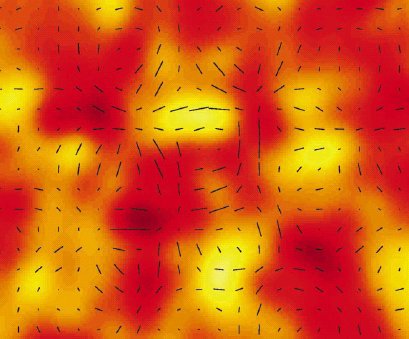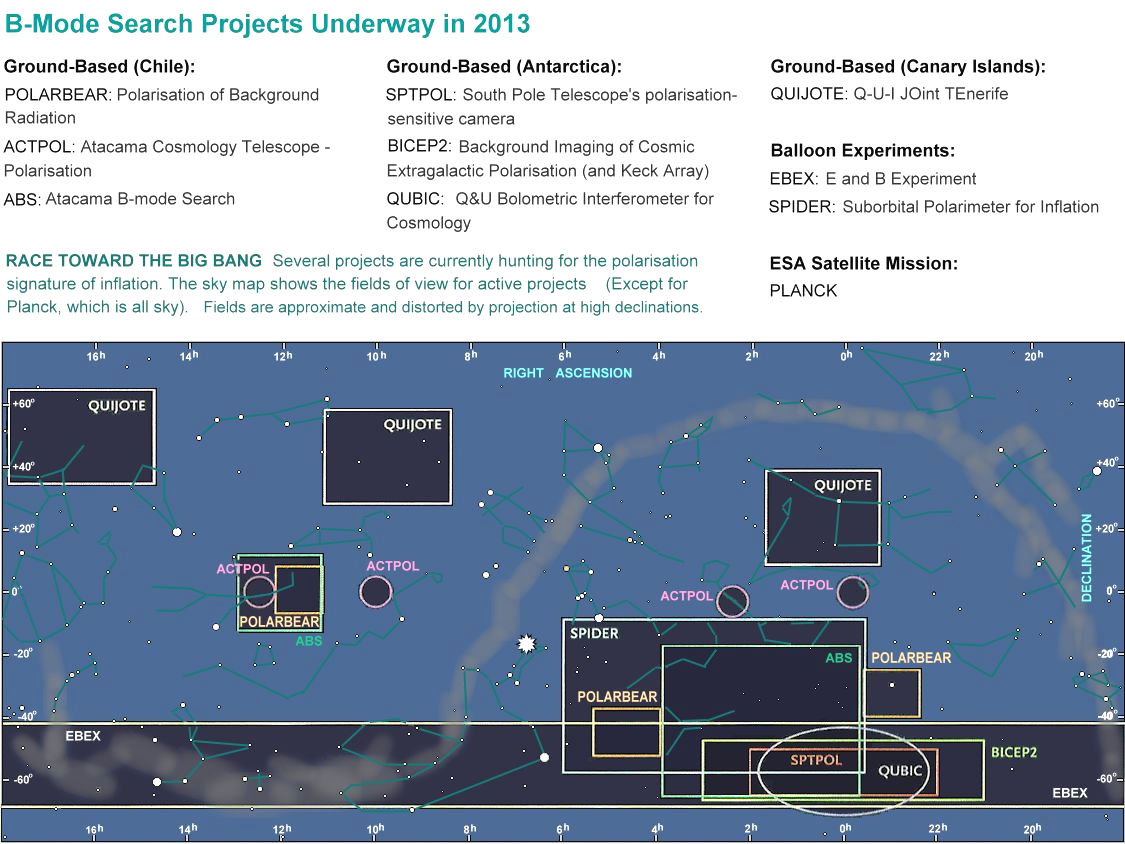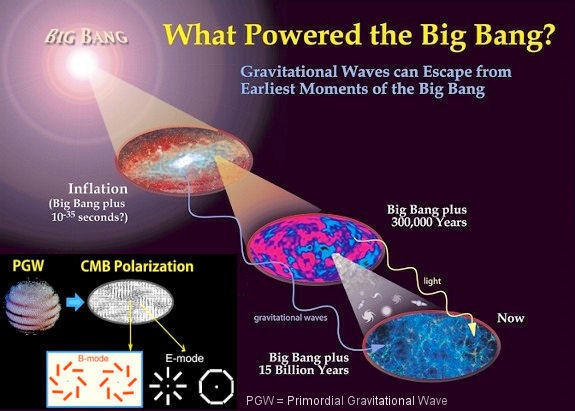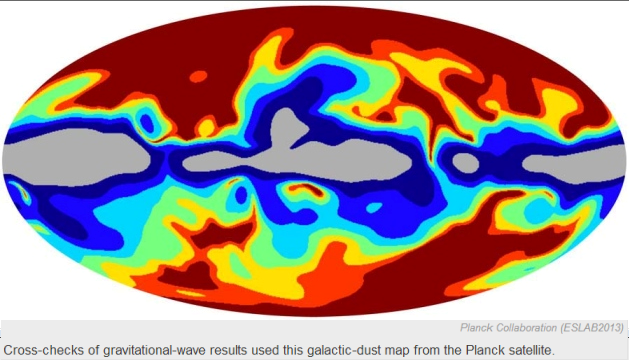
| Home Page | Overview | Site Map | Index | Appendix | Illustration | About | Contact | Update | FAQ |
 |
Recently in 2002, the Degree Angular Scale Interferometer (DASI) has detected partial polarization of the CMBR at the sensitivity level of one part in a million. In Figure 02-07a the temperature fluctuations are represented by yellow for hotter, red for colder regions. Superimposed is the polarization measured by DASI. The polarization at each point is represented by a black line, whose orientation and length correspond to the direction and amount of polarization, respectively. The magnitude of the polarization on small angular scales depends on the anisotropy being in place at recombination but on large angular scales, the polarization patterns were formed at the beginning of the reionization era, when the first starlight began ionizing the cold hydrogen that filled the universe after the Big Bang cooled. Measurement by WMAP indicates that the first stars were born about 100 to 400 million years after the Big Bang. New polarization data (white bars in Figure 02-09aa) from |
Figure 02-07a CMBR Polarization |
WMAP in 2006 provide further evidence that the first stars formed some 400 million years after the Big Bang, which was followed by a period of inflation. |
 |

| By 2013 a slew of projects (see Figure 02-07b) are running to look for the B-mode polarization of the microwave imprinted on the cosmic background some 300 thousand years after the Big Bang. Such mode of polarization is unique in its ability to link to the gravitational wave which is a by product of the inflation theory in standard cosmology (Figure 02-07c). The E-mode should also be generated in the same process, but it is often masked by other generating mechanisms. It is rather confusing that the inflation "hypothesis" is accepted as a theory because of its power of |
Figure 02-07b B-mode Projects [view large image] |
Figure 02-07c B-mode Polarization |
explanation (for some phenomena). Therefore, the detection of B-mode polarization is a big deal to verify the "hypothesis". The B-mode |
 |
pattern should be most apparent across regions roughly 2o wide on the sky. The B-mode polarization converted from the E-mode has to be subtracted in order to get the real thing, and it has a sensitivity level about 100 times lower than the variation of the CMBR temperature. That's why it is not observed so far. The B-mode polarization was discovered by the BICEP2 project after three years' painstaking analysis and announced on March 17, 2014 (see Figure 02-07d and Nature Special). It provides a powerful support for the theory of inflation at the very early epoch of cosmic expansion. Many cosmological models such |
Figure 02-07d B-mode in CMBR [view large image] |
as those with axion base, the cyclic variety, and other applications of the superstring theory are ruled out (about 90% of them) by this finding because they predict a lower level or absence of gravitational wave. |
 |
Double check by other scientists reveals that the polarization pattern may be produced by inter-galactic dust. It is found that the original research under estimated the role of such dust at only between 3.5% and 5% of the fraction of total polarization. Extrapolation from a more detailed map (Figure 02-07e), released last month by the Planck team, suggests that the fraction is closer to 8 - 15%. A final determination cannot be made until a more precise dust map, expected to be released by the Planck team in October, 2014. Such verification and scrutiny is normal and necessary in scientific discovery. |
Figure 02-07e Inter-galactic Dust [view large image] |
In the 5 June 2014 issue of Nature, a leading cosmologist argues that since the multiverse paradigm contains all kinds of possibilities, it is thus untestable and scientifically meaningless. |
 |
Interstellar dust map (Figure 02-07f) published by the Planck team on September 22, 2014 shows that the patch of sky observed by the BICEP2 telescope (rectangle) was not among the least dusty. The Planck collaboration and the BICEP2 team are now working together to find if some small residual B-mode signal can be extracted after subtracting for the polarization owing to dust. That analysis is expected to be released in late November, 2014. |
Figure 02-07f Planck's Dust Map [view large image] |
Note the dusty ring (red) around the galactic equator. |